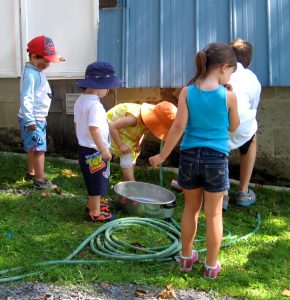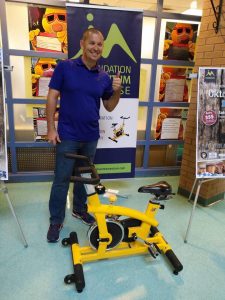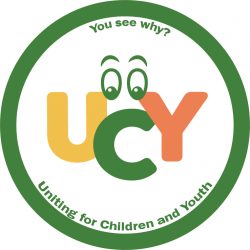Repost from September 9, 2018
Following are eight fundamental problems with the industrial model upon which traditional education is based. As we become more aware of these problems, the support for creative and innovative teachers and principals will grow. Ottawa residents, help us to inform voters of the need to get beyond industrial model schools. Make this election year the turning point, the point when we systematically undertake real change. Follow developments in the lead-up to the October 22nd school board trustee elections. Help us to have more people than ever going to the polls informed of educational issues and the candidates most likely to address them effectively.
Eight Fundamental Problems
This list is a sampling. Readers are invited to add other problems or make comments below.
1. Children as young as 5 are being made to feel inferior.
Children entering grade 1  can be almost a whole year younger than their peers, yet they are all measured according to standardized curriculum outcomes. The age difference is huge and can leave the younger children disadvantaged and feeling inferior for no reason other than their birthdate. There are many examples of schools that do not discriminate by age. There is a solution to the problem.
can be almost a whole year younger than their peers, yet they are all measured according to standardized curriculum outcomes. The age difference is huge and can leave the younger children disadvantaged and feeling inferior for no reason other than their birthdate. There are many examples of schools that do not discriminate by age. There is a solution to the problem.
2. Schools are killing creativity.
Using a creativity test developed by NASA, scientists found that 98% of 1600 – 4 and 5 year old children in the study fell within the genius category of imagination. When these children were 10 years old they were retested and the number in the genius category dropped to 30%. The number dropped to 12% when this group was tested again at 15 years of age. The article containing this information asked, “What about us adults? How many of us are still in contact with our creative genius after years of schooling?” The answer given was 2%.
This concern that schools are killing creativity is the topic of Sir Ken Robinson’s most watched Ted Talk of all time. The World Economic Forum expressed a similar view in a recently published article titled Education systems can stifle creative thought: Here’s how to do things differently.
An IBM survey of more than 1,500 CEO’s from 60 countries and 33 industries worldwide puts the value of creativity into some perspective. They believe that “more than rigor, management discipline, integrity or even vision – successfully navigating an increasing complex world will require creativity.”
Creativity is listed along with critical thinking, communication and collaboration as comprising the 4C’s. These qualities, believed to be essential for successful living in today’s world, are poorly cultivated in traditional schools. EdLeader21 is pioneering how to develop the 4C’s in schools.
3. The lack of movement is resulting in kids being labelled ADHD.
Maria Montessori stressed the importance of movement, believing that curtailing it threatened the child’s personality and sense of wellbeing. Finnish schools give students more recess time than most North American schools. Witnessing the good results in Finland, a Texas school gave its students three times more recess with the result that ADHD became far less of a problem.
La Fondation Momentum Jeunesse/Youth Momentum Foundation  is an Ottawa/Outaouais organization promoting the mental health of young people. It recognizes the negative health affects of children being too sedentary and is helping to alleviate the problems by placing spin bikes in classrooms. It gives kids who feel they need to get up a move a way to get some exercise.
is an Ottawa/Outaouais organization promoting the mental health of young people. It recognizes the negative health affects of children being too sedentary and is helping to alleviate the problems by placing spin bikes in classrooms. It gives kids who feel they need to get up a move a way to get some exercise.
Other groups working locally to ease this problem are the Healthy and Active Living and Obesity (HALO) branch of the CHEO Research Institute, Forest Schools and Active and Safe Routes to School.
4. Physical and mental illness are caused by a lack of control over one’s life.
A recently published book The Self-Driven Child helps to expand thinking around this problem. Elsewhere, a lack of control over one’s life is being identified as a major contributor to stress, and high levels of stress lead to physical and mental ill health. Traditional schools are controlling. Students have little say in making decisions that affect them. Many adults think that young people lack the experience to make good decisions, but students attending democratic schools have proven otherwise. They show that they are capable of making good decisions and they learn how to be good democratic citizens when they participate in meaningful decision making.
5. Age-segregation is a huge waste of our best learning resource.
We’ve all seen it. Children learn a great deal from older children. Daniel Greenberg, a founder of the Sudbury Valley School, said when asked to explain the success of the school, “Age-mixing is our secret weapon.”
Not as obvious is what older children learn from younger ones, but it’s equally important. They learn about empathy and caring. They practice their communication skills when explaining things to younger people. They solidify their knowledge by sharing it with others, re the adage: “If you want to really learn something – teach it.” They improve their oral reading skills when they read to younger children, and all of these interactions help to boost their self-image.
We need to rethink schools so that we take advantage of this great learning resource.
6. The lengths of the school day and school year are out of sync with the needs of today’s families.
The lengths of the school day and school year simply don’t fit the needs of modern families. Working parents are often burdened with the need to find before and after school care, and their kids get shuffled from one place to another. Increasingly, community schools are offering before and after school programs, but children still get shunted from one program to another. It’s a problem with no easy solution in traditional schools, but by changing the school model new solutions become available.
The same is true with the length of the school year. It doesn’t fit the needs of modern families. Working parents have the headache of trying to figure out what to do with their kids for two summer months when schools are closed. Under a different model, year-round schools become much more of a possibility. Year-round schooling is not more of the same kind of schooling we have now. How it would look is for people to imagine at this stage. The Sudbury Valley School, summer camps, world schoolers, unschoolers, family holidays anytime, student exchanges, coop experiences of any length, and all sorts of other things amount to what some imaginative people call “the infinite possibilities”.
7. Top students are not tops in the workplace.
Alfie Kohn and Robert Sternberg are two highly respected people who warn against thinking students with good grades are doing fine. In a short, but impactful video, Kohn talks about how students can become fixated on getting good grades and how they can lose something as individuals and as learners.
In a Scientific American article, Sternberg says, “Our overemphasis on narrow academic skills—the kinds that get you high grades in school—can be a bad thing for several reasons.” He argues “that intelligence that’s not modulated and moderated by creativity, common sense and wisdom is not such a positive thing to have. What it leads to is people who are very good at advancing themselves, often at other people’s expense. We may not just be selecting the wrong people; we may be developing an incomplete set of skills—and we need to look at things that will make the world a better place.”
8. The exclusion of parents.
Many parents would like to be more involved in their children’s education, but schools offer little in between. Either the children go to school full time or they get homeschooled. Liberated Learners demostrates how to combine the two in ways that suit students and families. The possibilities for schools to be working in better partnership with families are greatly expanded once we get beyond the constraints of the industrial model of schooling.
Getting rid of formal scheduling is a key to solving these problems. Small pilot programs in community schools involving students, teachers and parents who want to be pioneers of a new age of learning is a sensible way to proceed. This is how real innovation can begin.
Of note is the Canadian Coalition of Self-Directed Learning. It’s a group of eight public schools located in Ontario, Alberta and British Columbia. These are good examples of people pushing the boundaries.

